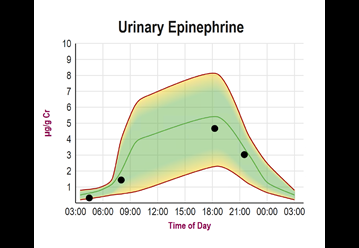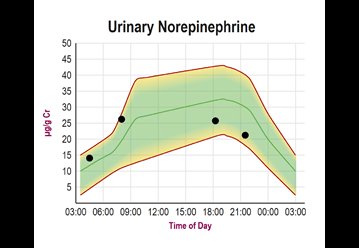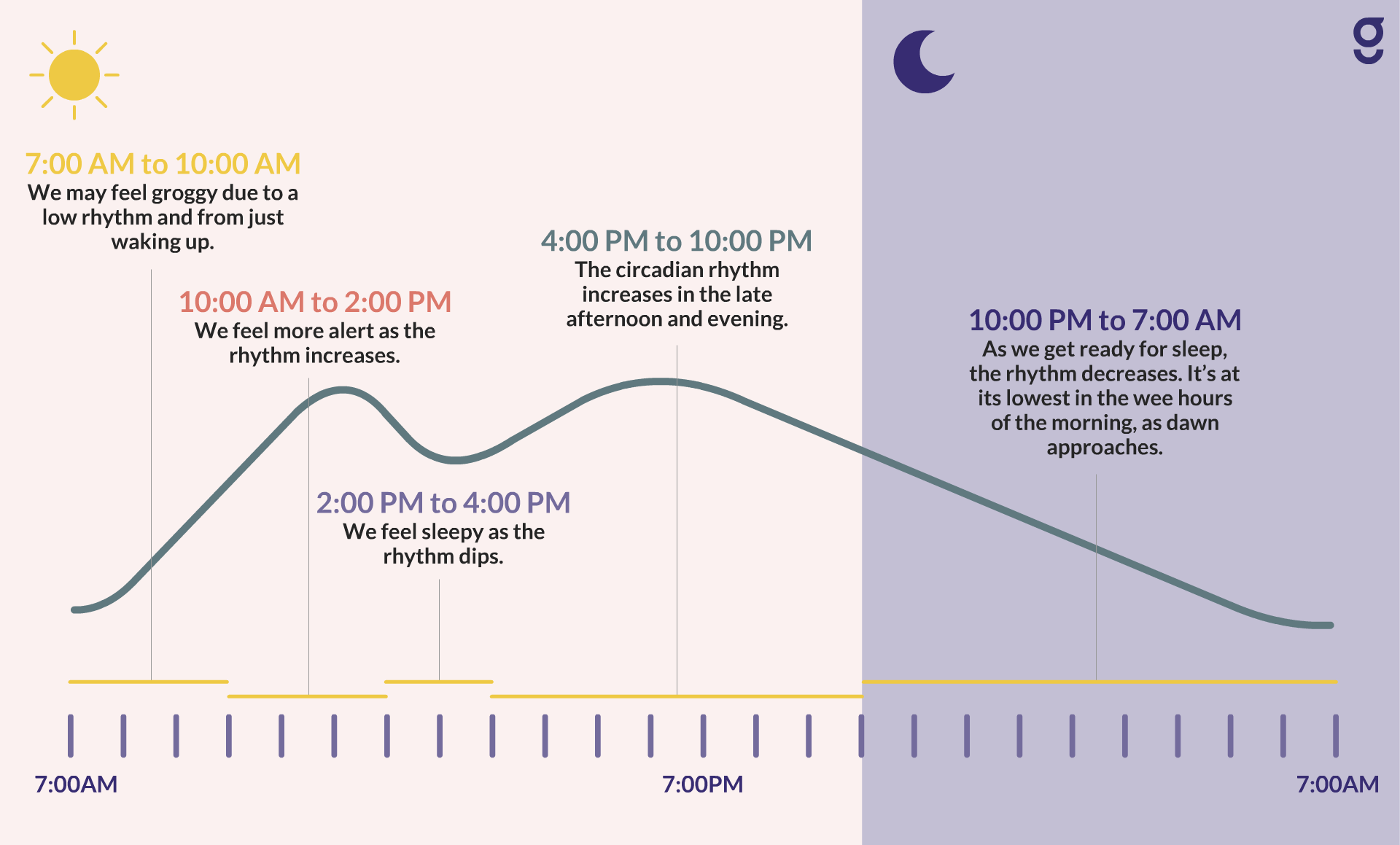Diurnal Curves Much like the Cortisol Awakening Response (CAR) is a helpful tool for looking at the body's awakening stress response, severe fatigue may be more completely assessed with the aid of diurnal epinephrine and norepinephrine patterns.
Both excitatory neurotransmitters, epinephrine, and norepinephrine regulate the “fight or flight” response, elevate blood pressure and heart rate, stimulate wakefulness and reduce digestive activity.
Under conditions of little to no stress, early morning norepinephrine and epinephrine levels are low, increase towards mid-morning, peak in the afternoon, and decrease by bedtime with low levels during the night.
Under conditions of acute stress, the sympathetic nervous system signals to release epinephrine and norepinephrine, contributing to higher blood pressure, increased breathing rate, mobilization of glucose from storage, increased heart rate, and increased muscle strength. Diurnal Curves of Epinephrine & Norepinephrine
Diurnal curves of epinephrine and norepinephrine can easily be assessed by taking four daily dried urine collections – typically done upon waking, two hours after waking, before dinner, and before bed – and charting them on a 24-hour graph.
The added benefit to Lab Me's dried urine testing is that epinephrine and norepinephrine can be measured in combination with cortisol and melatonin, so those who want a complete adrenal assessment can now get all of these together in Lab Me's Sleep Balance profile.


Diurnal Curves and Chronic Stress
Diurnal curves and circadian rhythms are not the same, but they are very closely related. Both diurnal curves and circadian rhythms are associated with excitatory neurotransmitters, epinephrine and norepinephrine, which regulate the fight or flight response, elevate blood pressure and heart rate, stimulate wakefulness and reduce digestive activity. Diurnal curves relate to the changes in these neurotransmitters over the course of a day while circadian rhythms refer to an internal 24-hour clock that affects sleep cycles and other bodily functions including body temperature, hormone production, and heart rate.
The Morning Peak
After a night of sleep, we typically see higher cortisol levels in the morning, followed by a gradual decline throughout much of the day. But if you’re experiencing chronic stressors (such as work deadlines or relationship issues), your body might not return to baseline levels by bedtime. Instead, cortisol remains elevated while you sleep. Although occasional stressful nights are not an issue for most people, long-term stress can cause problems—including disrupted metabolism and loss of muscle mass. If you’re looking to lose weight more easily or improve athletic performance, consider implementing changes to keep your diurnal curves healthy (and flat!)
Evening Low
The morning after a sleepless night, diurnal curves are low or nonexistent. You may have low energy, feel irritable, or have trouble concentrating on simple tasks. In addition to making you more susceptible to chronic stress, high evening levels of epinephrine make you crave sweet foods. These binges increase your weight, which raises blood pressure so that many women with PCOS suffer from hypertension in midlife.

Chronobiology & Chronic Stress
Our diurnal curves are influenced by several things, including chronic stress. Chronobiology is a branch of biology that studies such phenomena as daily rhythms in sleep, eating habits, fertility cycles and rates of diseases or disorders.
Chronobiology also helps explain why some of us always wake up with an alarm clock while others wake up at sunrise without any help. These patterns relate to circadian rhythms (circadian means about a day) which occur in all plants and animals.
How to figure out your chronotype
If you’re having trouble getting out of bed in the morning, it might be because your body clock is set to wake up later than when you normally want to get up.
Luckily, there are ways to make yourself feel alert earlier in order to balance out your internal rhythm with your external expectations. Here are a few tips for figuring out what time you should get up, depending on your chronotype.
The early bird gets all of the light: Morning people (or larks) typically feel more energetic and awake after 6 AM, while night owls tend to start feeling active at around 11 PM.
If you’re a morning person, it’s easy to stick with your natural rhythm—just set your alarm for when you naturally wake up and try not to hit snooze.
If you’re a night owl, try waking up earlier than usual by going to bed earlier than usual or using an alarm clock that gradually turns on bright lights in order to simulate sunrise.
Sleep hacks for different chronotypes
An individual’s circadian rhythm is largely determined by genetics, although there are environmental factors that can affect it.
Naturally, our biological clocks are at their peak when we wake up in the morning and reach our lowest points of alertness during late afternoon/early evening hours. As you might have guessed, chronotypes are typically grouped into three types: early birds (morning-type), night owls (evening-type) and most people fall somewhere in between.
While all chronotypes are different, each has its own set of sleep hacks.
Early birds should go to bed earlier than usual if they want to feel more rested in the morning; for night owls, getting enough sleep and taking power naps during daytime hours will help them feel more energized later on. Most people who don’t fit into either category can try both approaches until they find what works best for them.
If you haven’t done so already, keep a journal or diary where you write down your feelings every day—you may notice patterns or tendencies that could help identify your chronotype. Also consider keeping a log of how much time you spend outside during daylight hours—the brighter it is outside, generally speaking, the harder it is to fall asleep at night.
Conversely, darker days with less sunlight may make it easier for some individuals to catch some zzz in preparation for nighttime activities.
Conclusion
It’s important to keep diurnal curves in mind when studying behavior as they indicate natural (daily) changes in function.
These curves have also been found to be disturbed by chronic stressors such as parental neglect, maternal separation, and overcrowding.
Future studies will focus on identifying underlying mechanisms linking chronic stress with an altered diurnal curve pattern, in hopes of understanding how these curves develop and what they mean for physiological function.
Several Lab Me dried urine profiles include the diurnal epinephrine and norepinephrine curves.
Just look for the Epi x 4 and NE x 4 indications in the profile.
View all of our at-home tests here.


